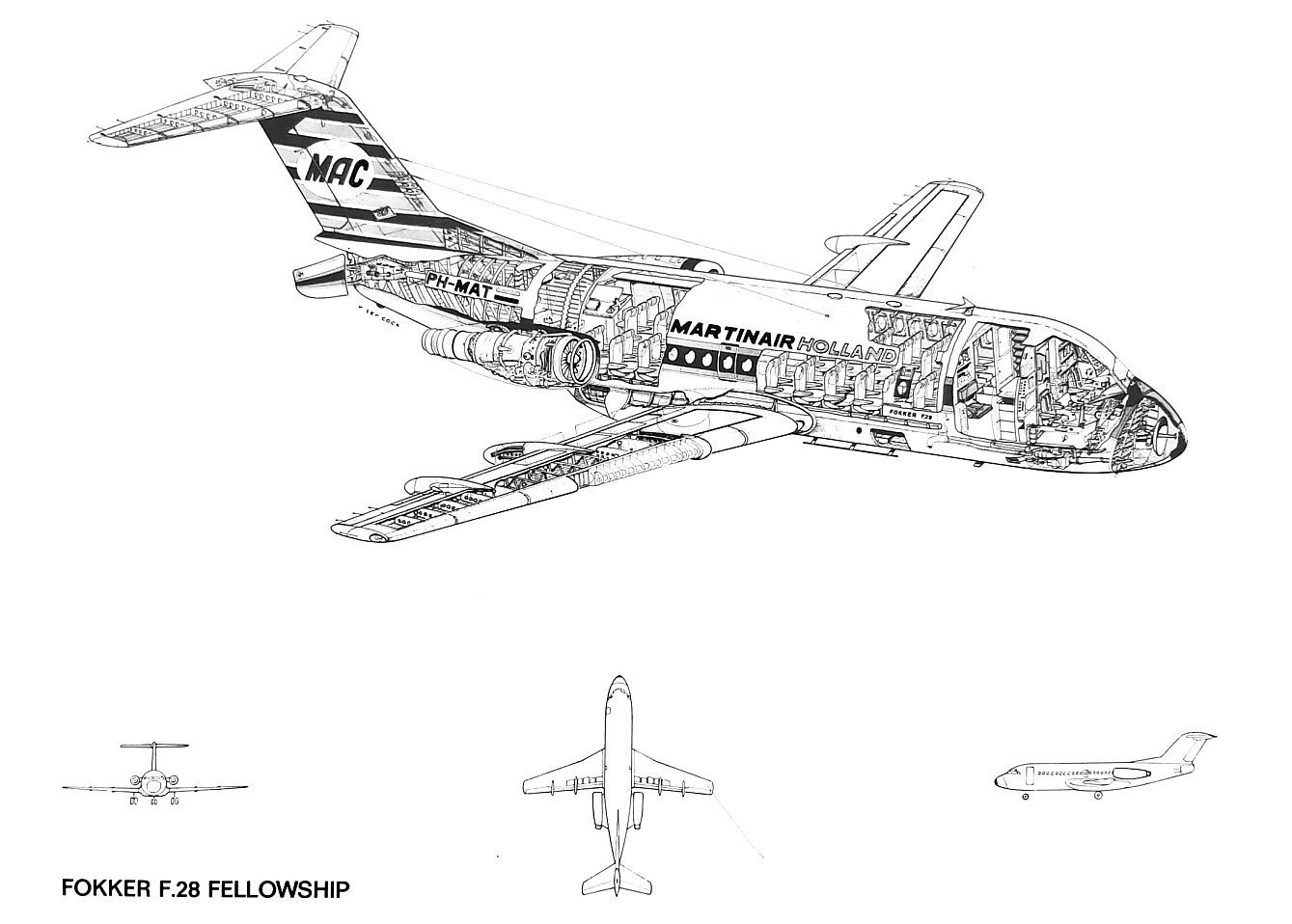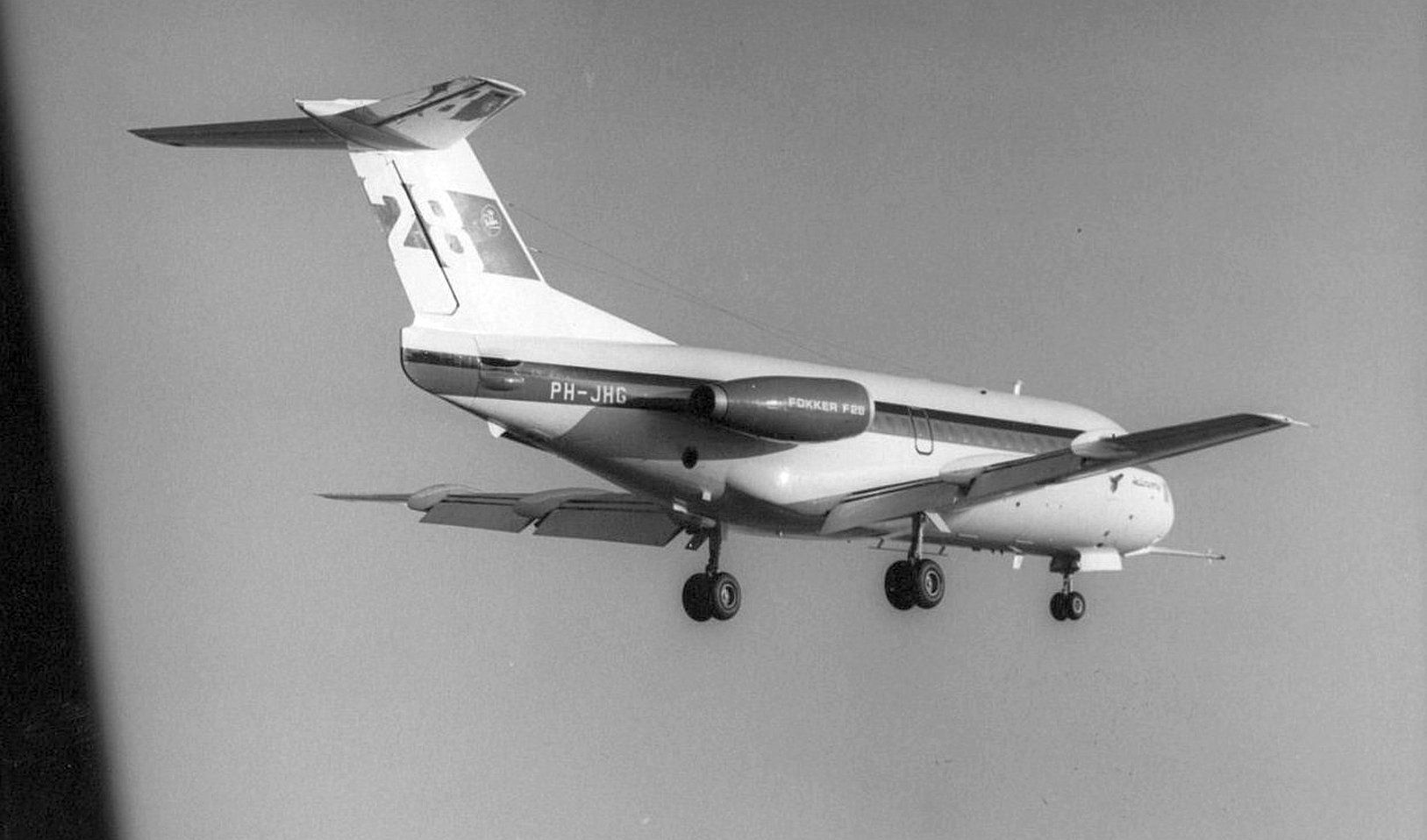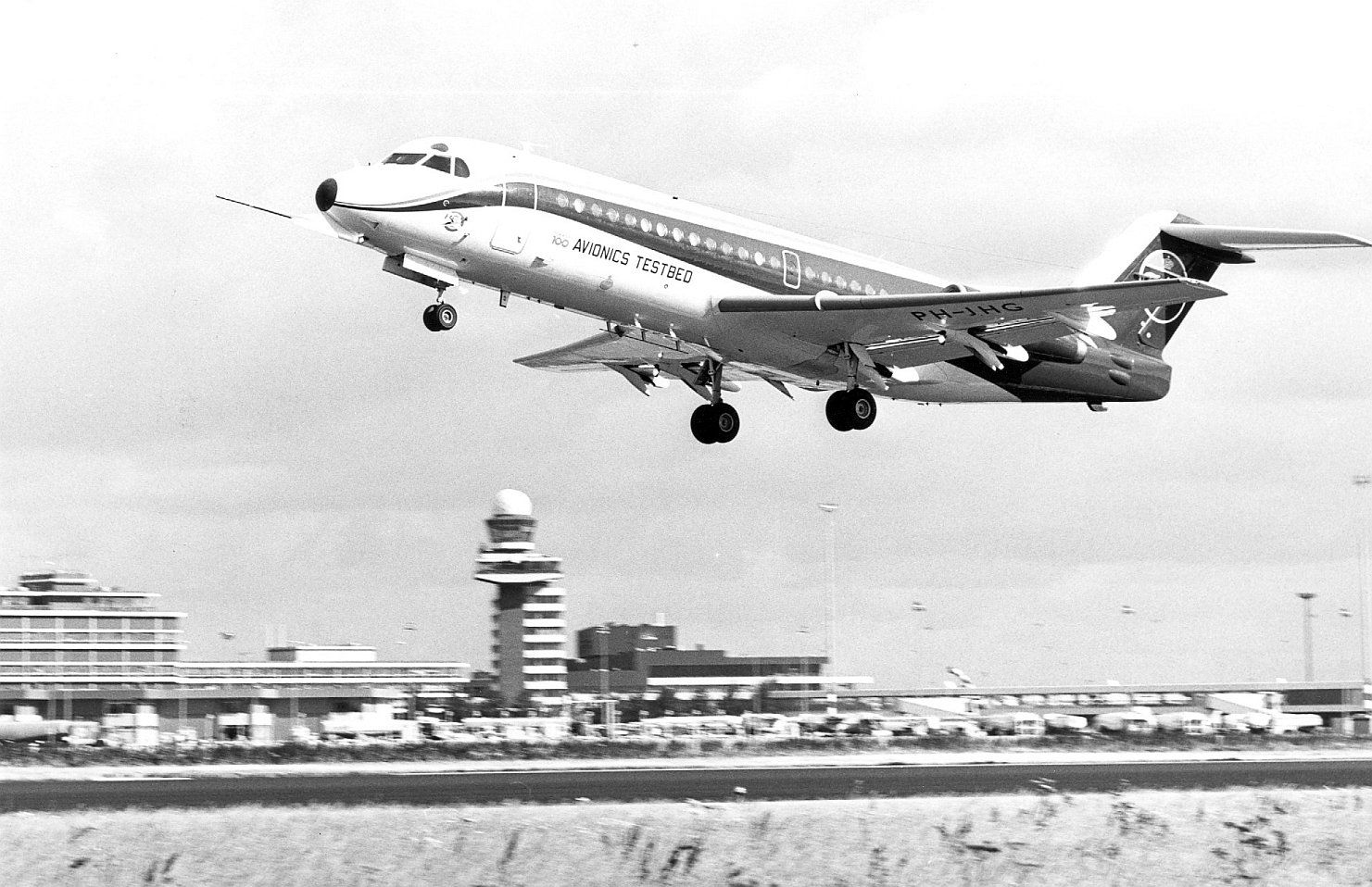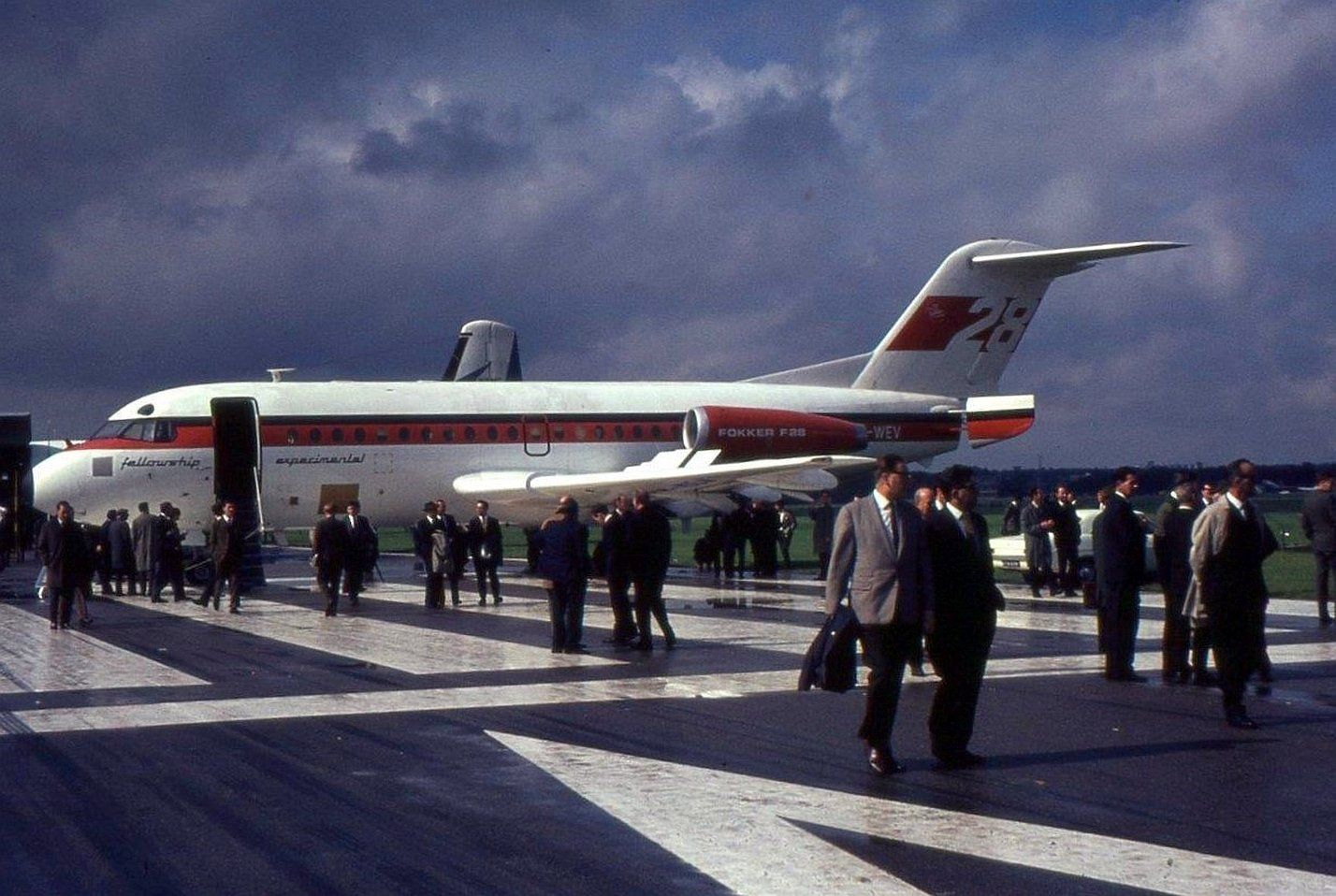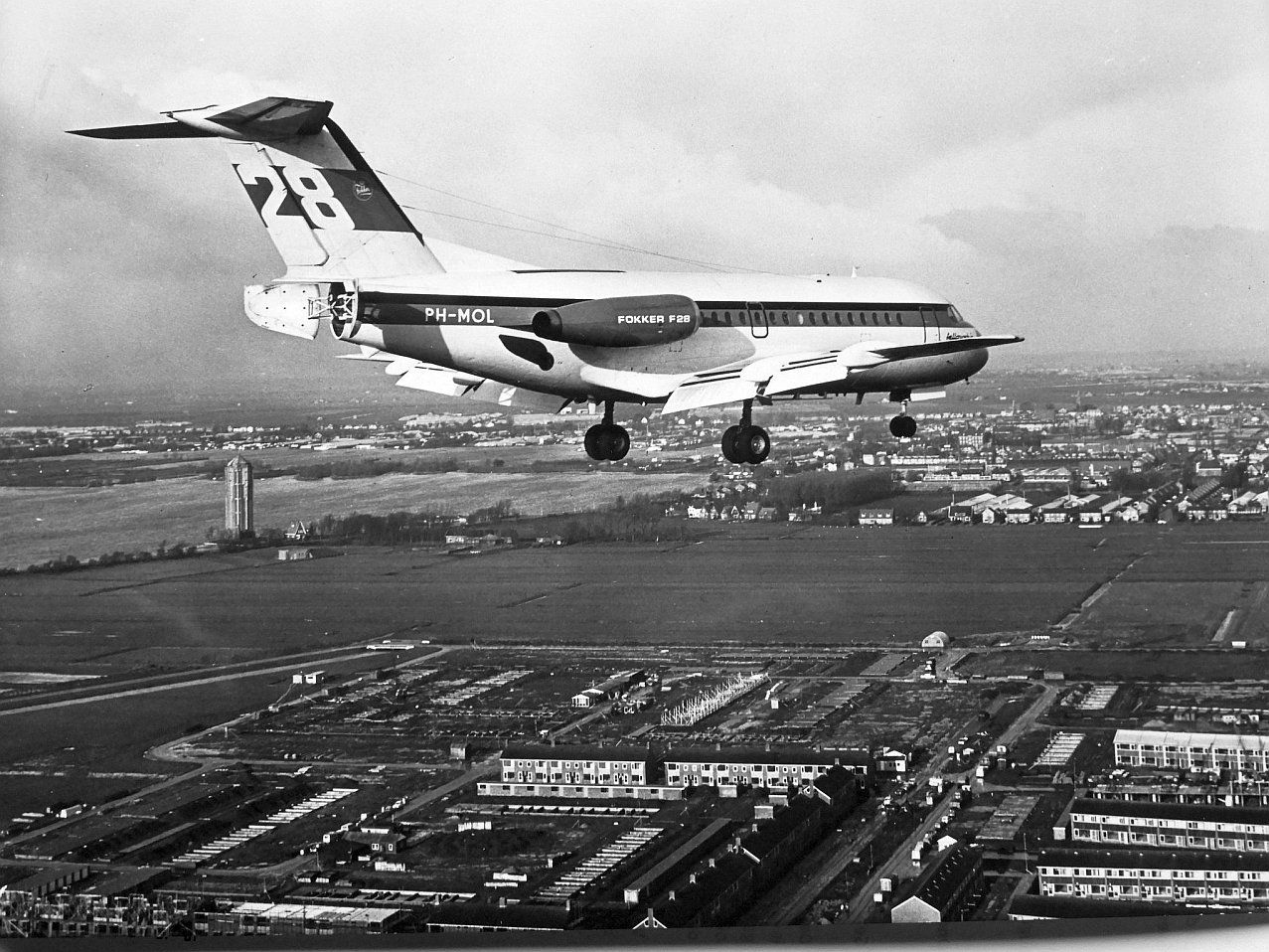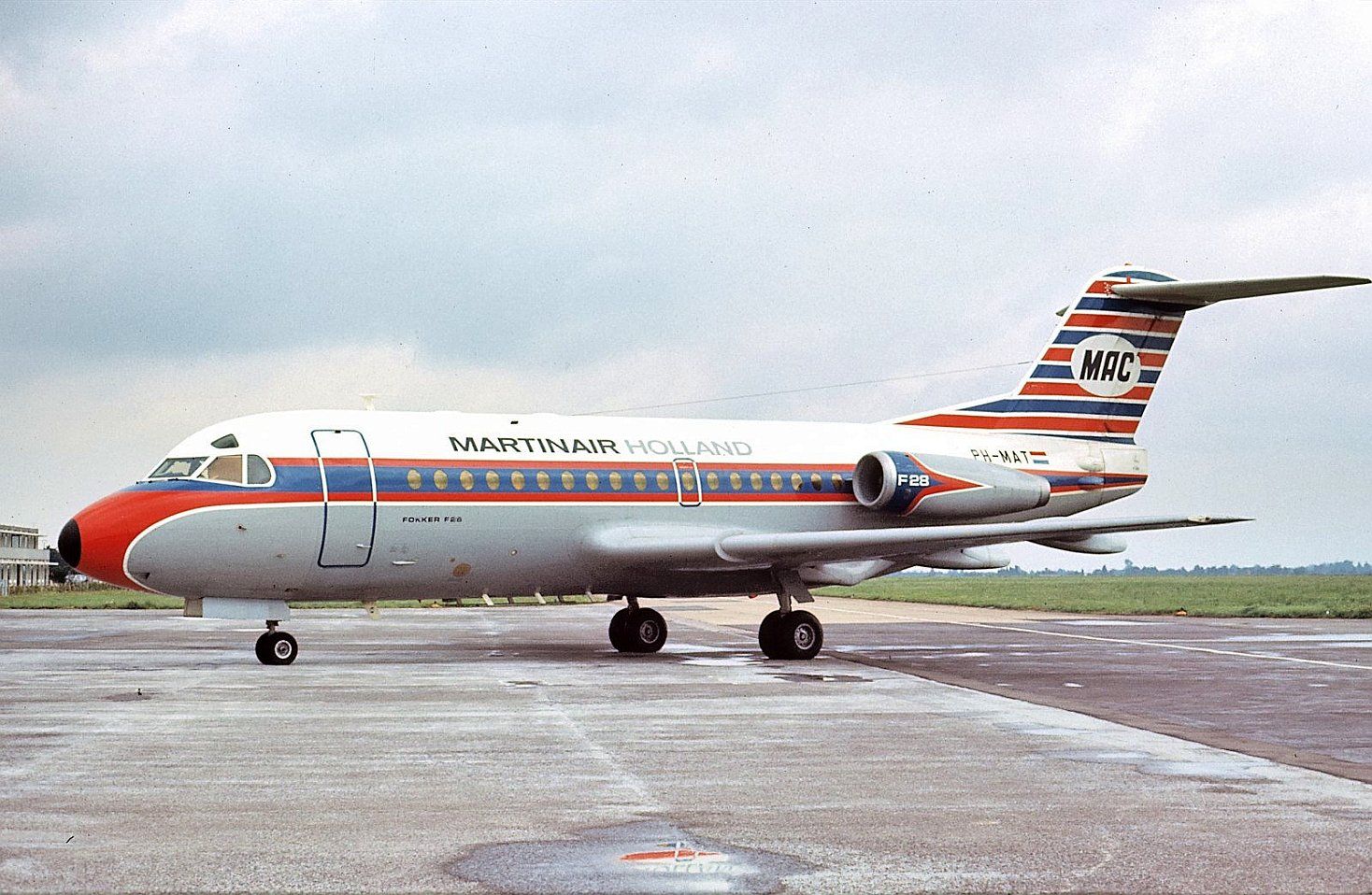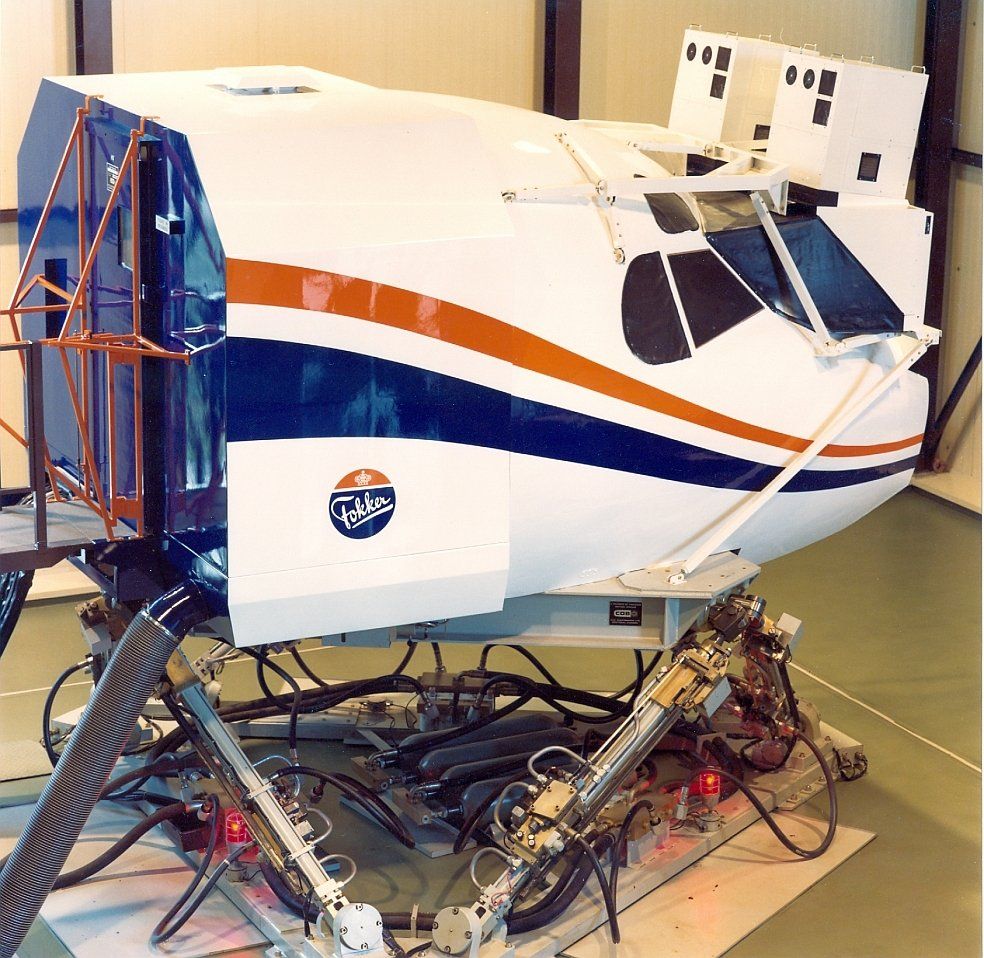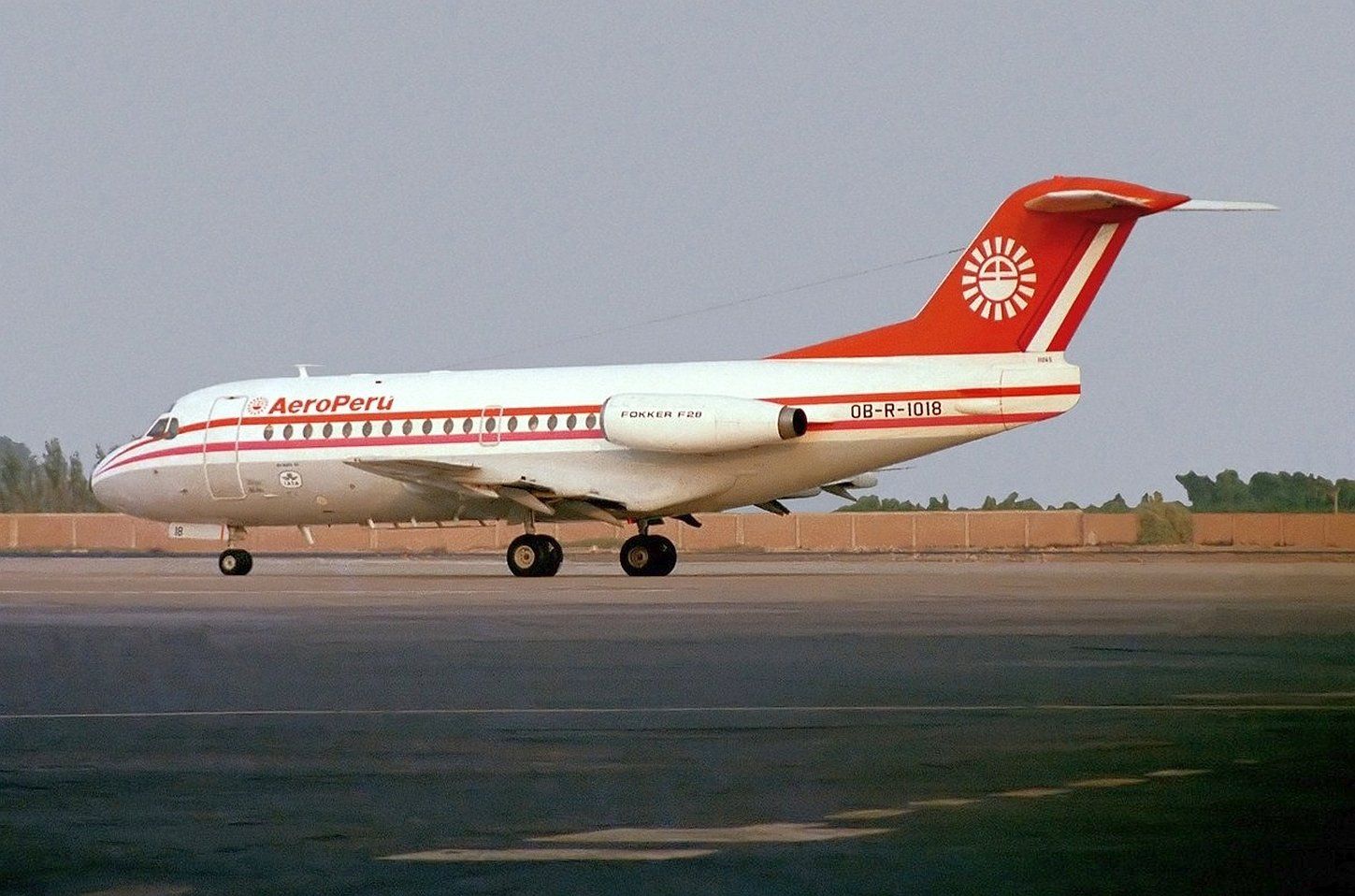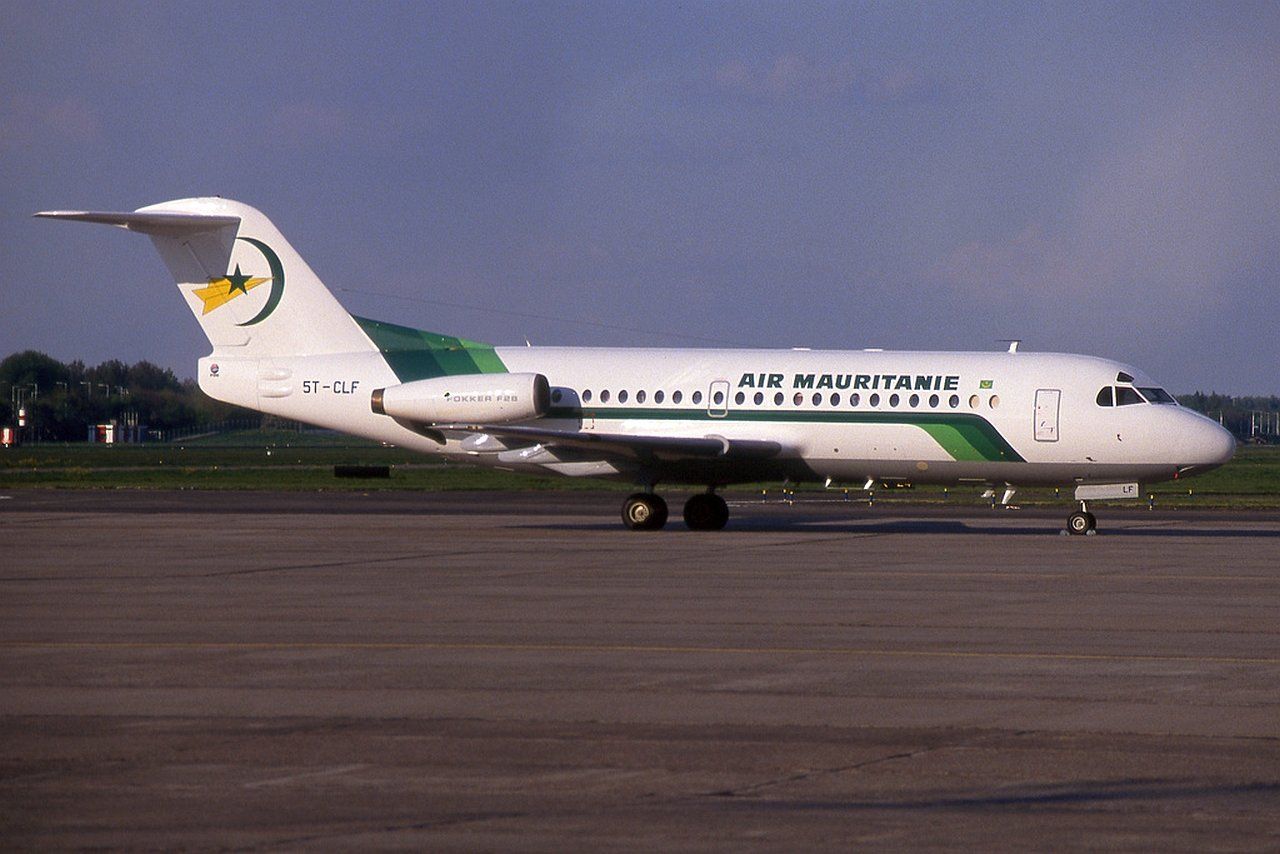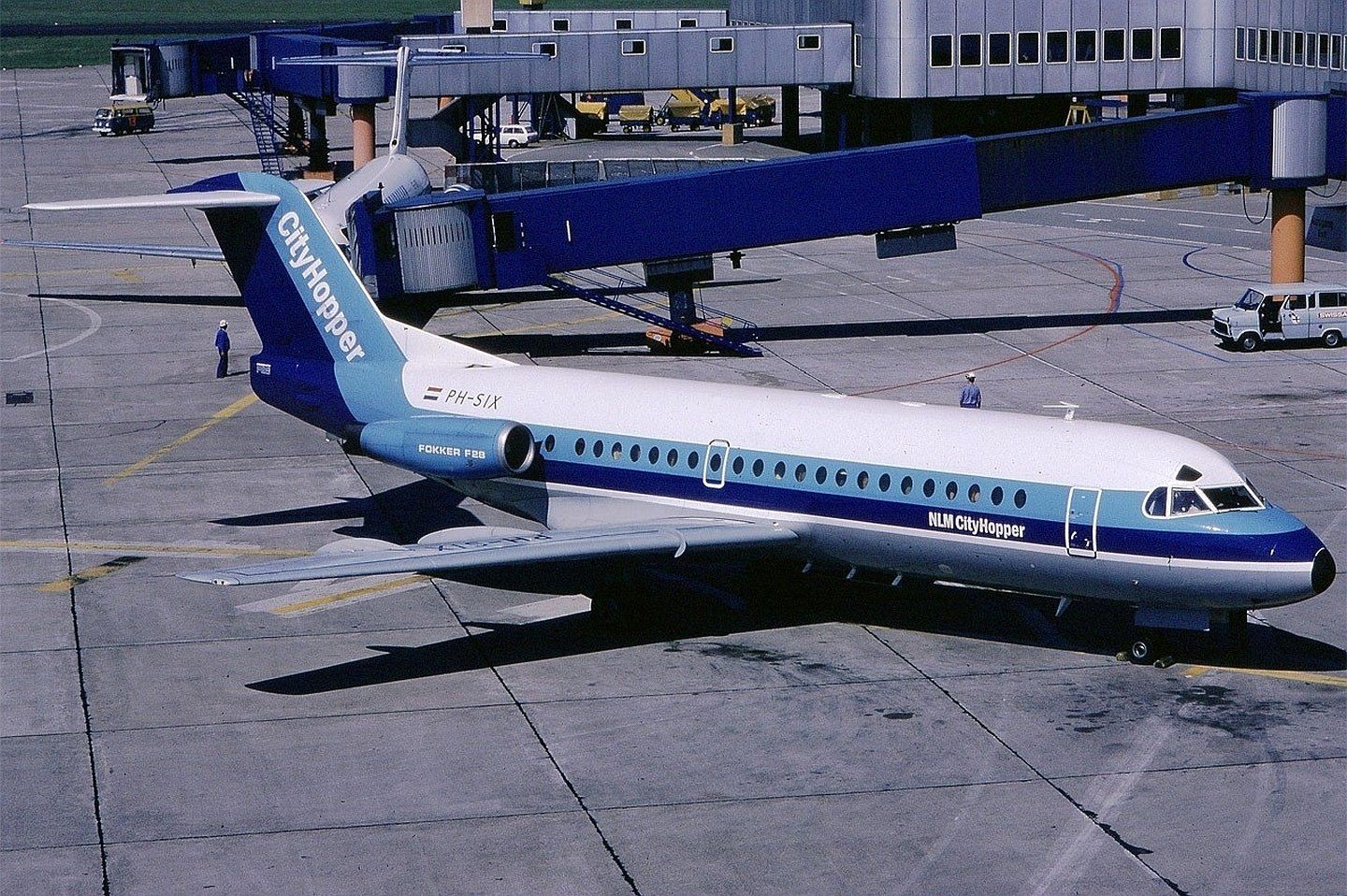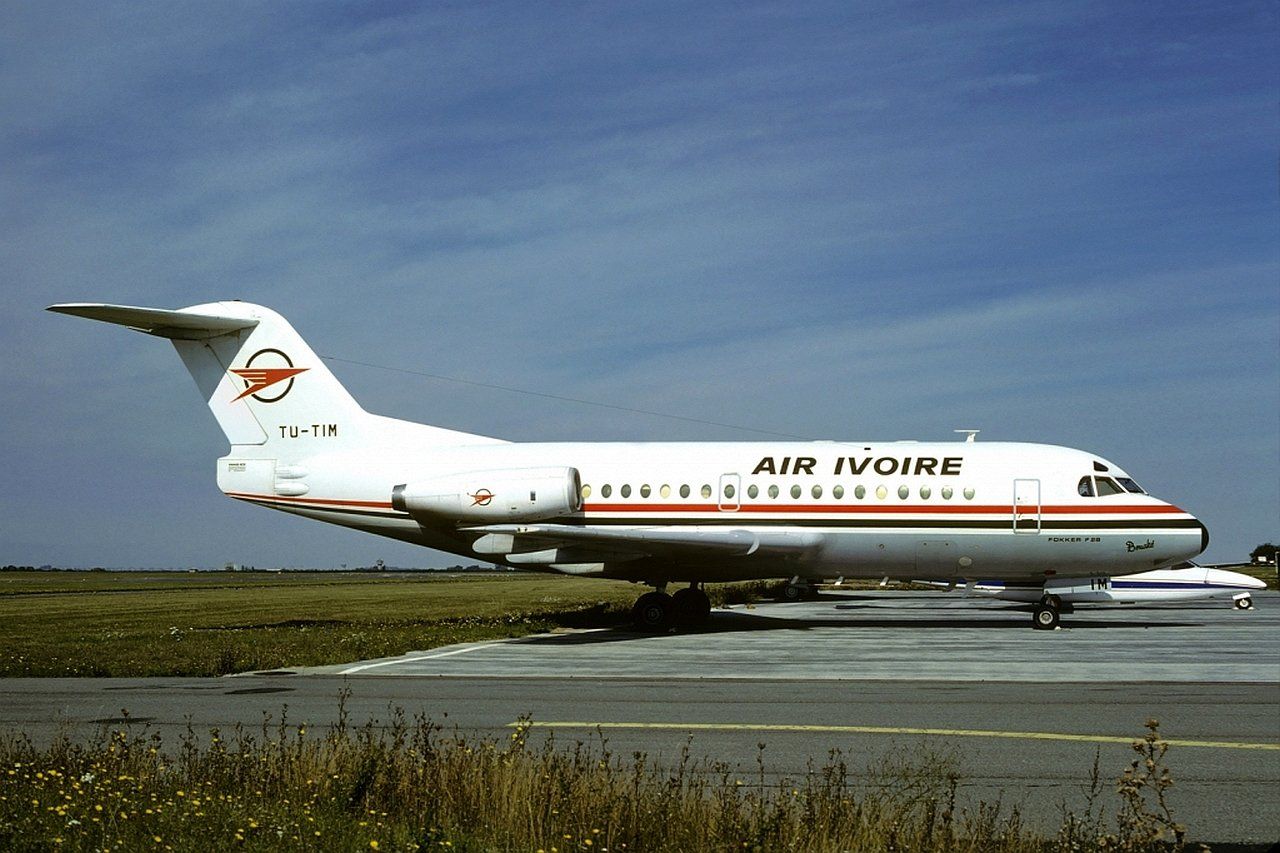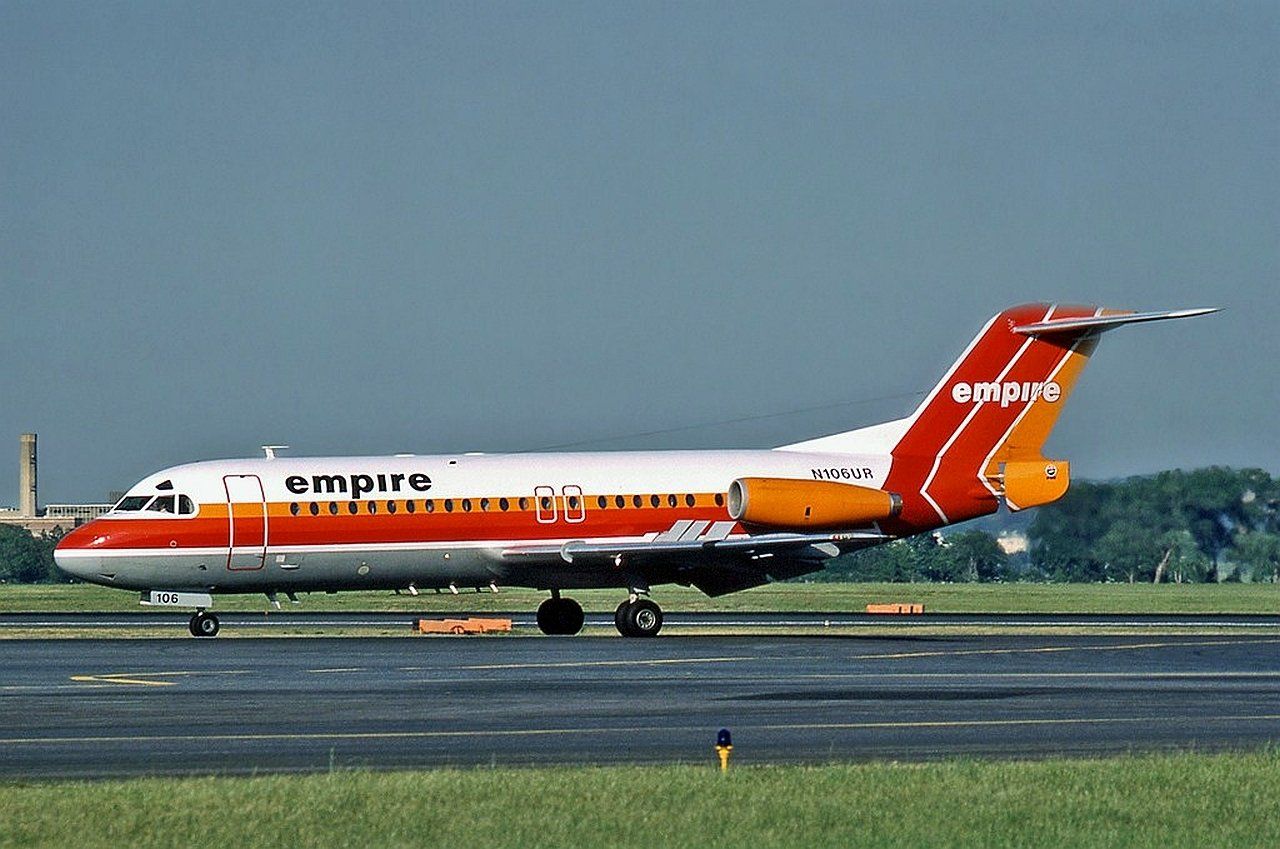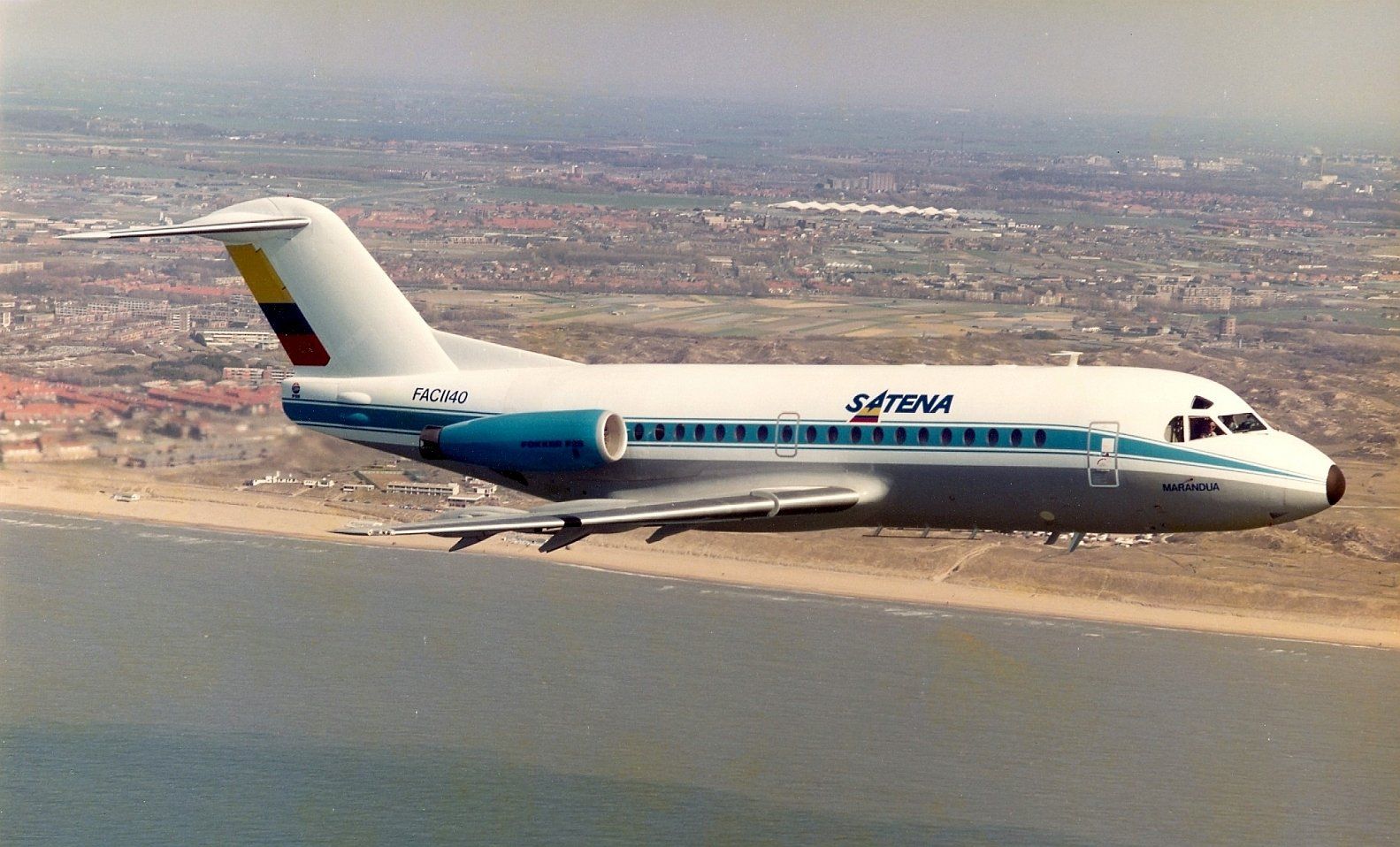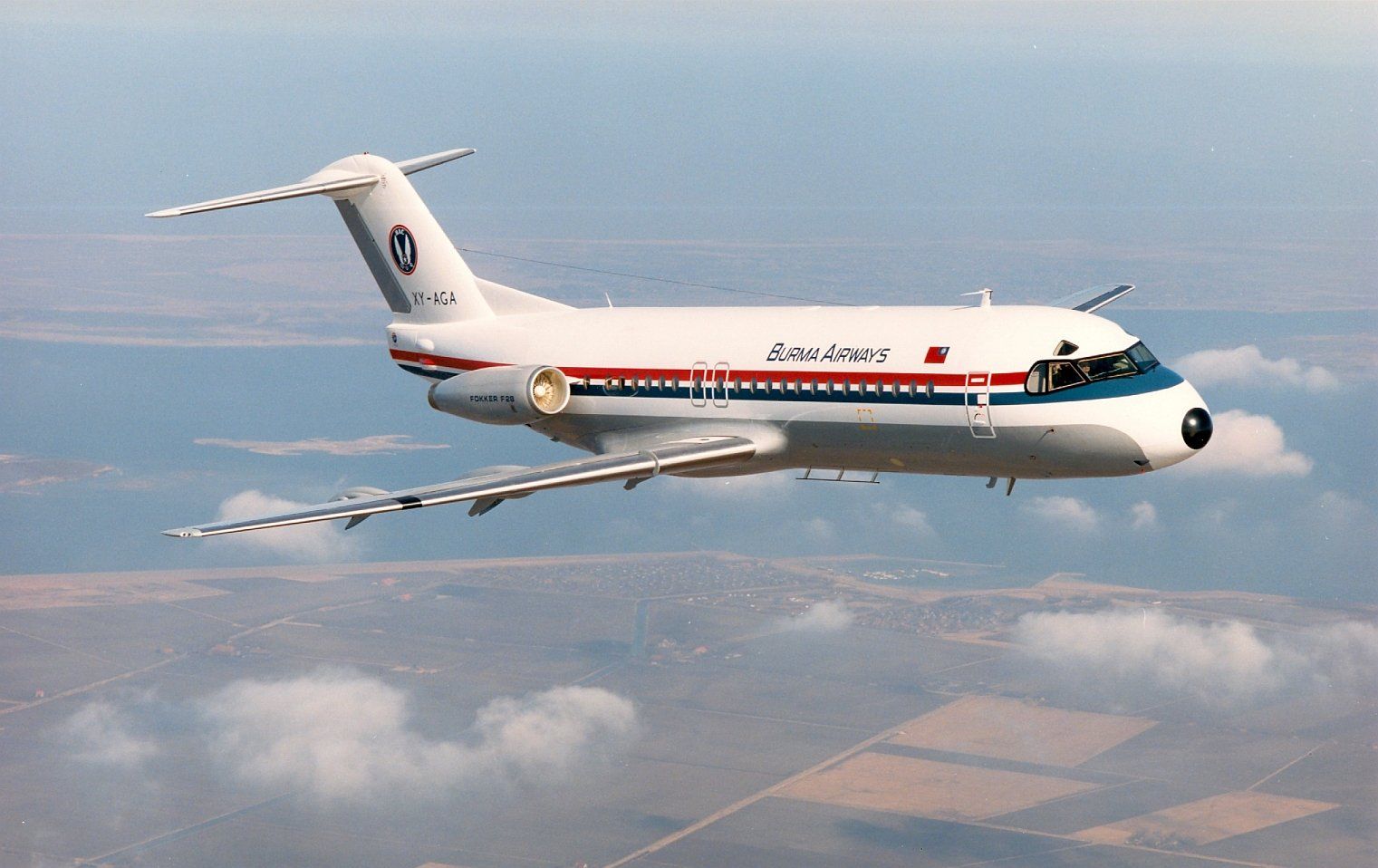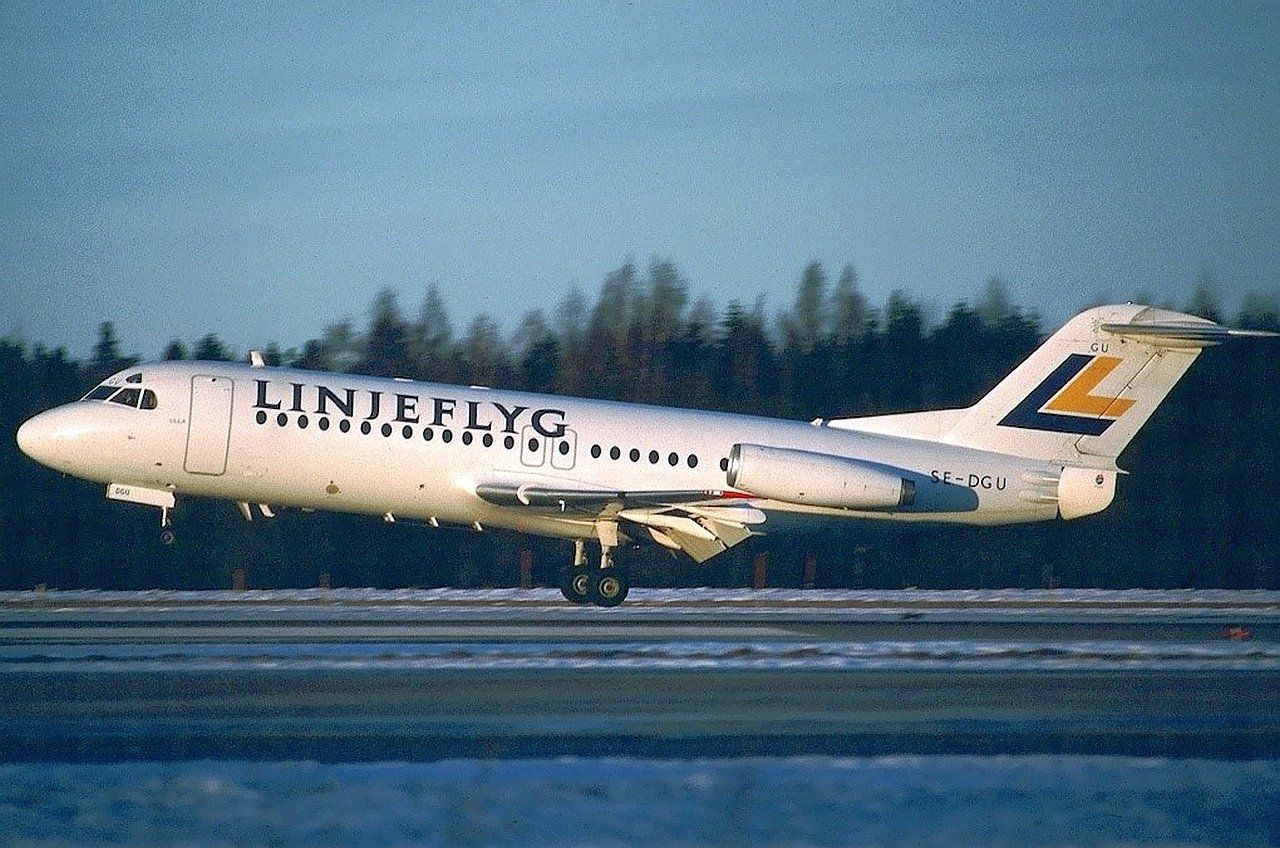Fokker F.28 Fellowship
In the early 60's Fokker realized that the time had come for a new aircraft. After the successful F 27 Friendship, Fokker had carried out extensive market research and invested a lot of time in the development of a new type of commuter aircraft. Eventually Fokker came up with the F.28, an aircraft that was slower than its competitors, but more maintenance-friendly and could use 85% of the airports served by the DC3 and F.27.
On April 28th, 1962, Fokker revealed the details of the F.28 Fellowship at the Hannover Air Show. A new aircraft, not as a successor to the F.27 but intended as an addition.
Both types therefore have had their own production line at Fokker, Schiphol for years. The F.28 was especially designed to operate from smaller regional airfields and fly short or medium distances. A special feature of this aircraft is the application of a "speedbrake" which was built into the tail. An application that was only common in military aviation and enabled the aircraft to descend effectively and quickly.
At Fokker it was the first passenger aircraft to be powered by two gas turbines (jet engines). It was a low-decker with the two Rolls Royce Spey engines mounted at the back of the fuselage. The horizontal stabilizer was mounted on top of the T tail.
The first design of the F.28 called for 65 passengers but eventually was built to carry 70 passengers. A later extended version could carry 85 passengers. The model itself was not revolutionary, as there were already three aircraft types flying of the same T tail configuration: the French Caravelle from 1959, the American DC-9 from 1965 and the English BAC-111 from 1963. It was courageous of Fokker that they dared to compete with these three competitors who had the same passenger capacity.
For the construction of the aircraft they worked together with Hamburger Flugzeugbau (formerly Blohm & Voss), Vereinigte Flugtechnische Werke (VFW) both from Germany and Short Brothers & Harland from Belfast (Northern Ireland).
Fokker built the nose section, the Germans built the front and rear fuselage section and tail. While Shorts in Ireland took care of the wings.
The financing was facilitated by the Dutch government which accounted for 50% of the Dutch part and the German government which accounted for 65% of the German part. The rest came from Fokker's own capital and the partners.
The final assembly was carried out at Schiphol Fokker factory
In recognition of the work of chief designer J.H. Greidanus, the first prototype was named PH-JHG and made its first flight on May 9th, 1967. The crew consisted of the test pilots Andreas ("Jas") Moll (captain), Abe van der Schraaf and flight engineer Cees Dik. The flight took place from Schiphol and lasted 1 hour and 25 minutes.
There are 243 Fellowships built in a number of versions for airlines, air forces and heads of state.
There are a total of 10 different F28 types designed of which 7 were produced and three that did not go beyond the drawing board and were therefore never built.
F.28 Mk 1000 (F28-1000)
A maximum capacity of 70 passengers. Proof of Airworthiness obtained on February 24th, 1969. The cargo version 1000C had a large loading door on the main deck.
F.28 Mk 2000 (F28-2000)
A Mark 1000 with an extended fuselage of 57 inches (1.4 m) in front of the wing and 30 inches (0.76 m) behind the wing, capacity of maximum of 79 passengers, made its first test flight on April 28th, 1971 and obtained the Certificate of Airworthiness on August 30th, 1972.
F.28 Mk 3000 (F28-3000)
A Mark 1000 with a 60 inch (1.5 m) extended wing. Certificate of Airworthiness on July 19th, 1978. The cargo version 3000C had a large cargo door on the main deck.
Because of an increased fuel capacity, this variant proved to be successful.
F.28 Mk 4000 (F28-4000)
Obtained the certificate of Airworthiness on December 13th, 1976. Built as the model Mark 2000 with two over the wing exits on either side, the wings were extended by 60 inches (1,500 mm) with an increase capacity of 85 passengers.
F.28 Mk 5000 (F28-5000)
The intention was to combine the short fuselage of the Mk 3000 with a larger wing with leading edge slats together with the more powerful Rolls-Royce RB183 Mk555-15H motor. Although it was expected to perform well on short runways due to its superior engine power, the project was abandoned.
F.28 Mk 6000 (F28-6000)
First flight on September 27th, 1973. The aircraft had the longer fuselage of the
Mk 2000/4000 with the extended wing and front wing slats. Received its Airworthiness on October 30th, 1975. Two were built, after which the project was abandoned. .
F.28 Mk 6600 (F28-6600)
Designed, but never built.
At the moment (April 2020) there are still 40 fellowships in active service with a number of airlines, Air Forces and heads of state.
Click on the photo to enlarge the photo

